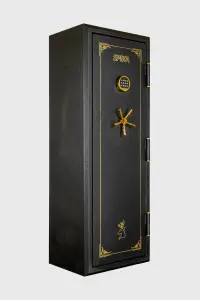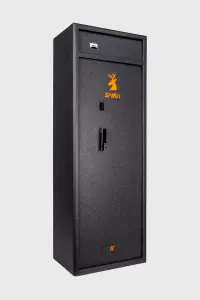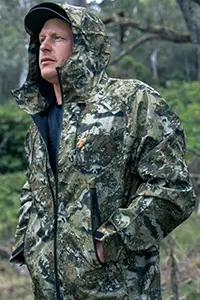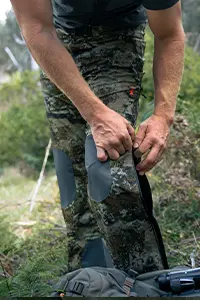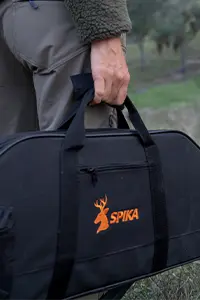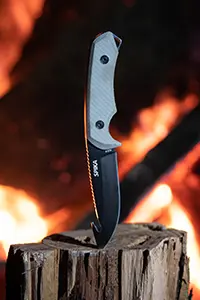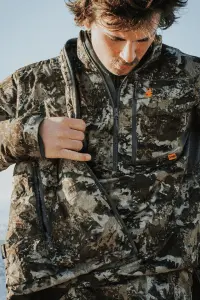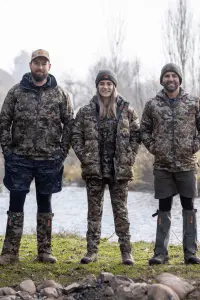STATE REGULATIONS
Any person in possession of a firearm must take all reasonable precautions to ensure the firearm is kept safely, is not lost or stolen and does not come into the possession of an unauthorised person. In addition to this general safe keeping requirement, there are specific legislative requirements for the safe keeping and storage of firearms that you should familiarise yourself with. We have listed out requirements below, that are correct as of July 2023, however it is your responsibility to check with your local laws to make sure you are meeting the required regulations.
ACT
Detailed State Requirements: Click Here
Category A and B firearms (up to and including 10 firearms in total)
- The firearms must be stored in a metal lockable container and the firing mechanisms must be stored in a separate lockable metal drawer or container that may be external or internal to the metal lockable container; or
- The firearms must be stored in a security container that is constructed of a recognised hardwood and lined with steel sheeting, the door of which is fitted with metal hinges and either an appropriate deadlock; or 2 sliding bolts fitted with padlocks of an appropriate strength.
- The container must be bolted to the floor/wall or both with a minimum of two suitable anchor bolts in order to prevent its easy removal (unless the mass of the container when empty is 150 kilograms or more when empty).
Category A and B firearms (in excess of 10 firearms in total), Category C, D and H
- The firearms must be stored in a metal or concrete or brick safe.
- For a metal safe: Must be constructed of structural grade mild steel that conforms with AS/NZS 3678:1996 grade 250 and is not less than 3mm thick and be constructed with continuous welding of all edges.
- For a safe other than a metal safe be constructed of reinforced concrete, double brick or reinforced besser blocks that are not less than 140mm thick.
- All safes must be fitted with a door:
- Constructed of structural grade mild steel (that conforms with Australian Standard 3678:1996 grade 250 and is not less than 3mm thick) and that is swung on either concealed pivots or externally mounted sealed-end hinges welded to the door and body of the container, and that is flush fitting with a clearance around it of no more than 1mm; and
- If the door is hinged - have a fixed locking bar or dogging bolts welded to the inside face of the door near the hinge edge that engages or engage in a rebate in the container body when the door is closed; and
- Be fitted with a 5-lever key deadlock or a locking mechanism that provides at least equivalent security; and
- Be constructed with a full length steel rebate welded to the side of the container body, the locking edge of which will receive the deadlock of the locking mechanism.
- A locking mechanism must be securely fixed to the rear face of the door of the container by retaining screws and a metal strap overlapping, or enclosing, the locking case with each end welded to the rear door face.
NSW
Detailed State Requirements: Click Here
Category A & B
Section 39 of the Act requires that any person in possession of a firearm must take all reasonable precautions to ensure the firearm is kept safely, not lost or stolen, and does not come into possession of an unauthorised person.
- Firearm - stored in a locked safe meeting the requirements below, when not being used or carried
- Safe
- commercially manufactured and made of steel or hardwood
- designed for securing firearms and not easily penetrable
- when mounted into brick, stone or concrete —be attached by at least 4 appropriately secured anchor points, internally fitted through holes in the rear and/or base securing it to the floor and/or wall
- when mounted into main wall studs — be secured to the wall studs and/or floor joists by at least 4 appropriately secured anchor points
- fixed if weighing less than 150 kilograms when empty
- Locking mechanism
- solid metal
- have a 3-point locking system with an internal locking mechanism that secures at various points around the door, or
- alternative door locking mechanism equivalent to, or exceeding, the 3-point locking mechanism
- external locks or padlocks to the door have a minimum body width of 40mm and hardened steel shackle
- Ammunition
- stored in a lockedmetal,or commercially manufactured locked container designed for storing ammunition, and,
- separate from firearms, or
- a commercially manufactured firearm safe containing an integral lockable steel compartment within the safe, is approved for storing ammunition
Category C, D & H
Section 39 of the Act requires that any person in possession of a firearm must take all reasonable precautions to ensure the firearm is kept safely, not lost or stolen, and does not come into possession of an unauthorised person.
- Firearm - stored in a locked safe meeting the requirements below, when not being used or carried
- Safe
- commercially manufactured and made of steel
- designed specifically for securing firearms and not easily penetrable
- when mounted into brick, stone or concrete —be attached by at least 4 appropriately secured anchor points, internally fitted through holes in the rear and/or base securing it to the floor and/or wall
- when mounted into main wall studs — be secured to the wall studs and/or floor joists by at least 4 appropriately secured anchor points
- solid steel fixtures attaching the safe anchor points to the structure of the premises where the firearm is authorised to be kept.
- Ammunition
- stored in a lockedmetal, or commercially manufactured locked container designed for storing ammunition, and,
- separate from firearms, or
- a commercially manufactured firearm safe containing an integral lockable steel compartment within the safe, is approved for storing ammunition.
QLD
Detailed State Requirements: Click Here
Category A, B, C, E & M (30 or fewer)
In a locked container constructed of solid steel or solid timber, and securely fixed to the frame or floor of a permanent building if the container weighs less than 150kg. Container must be kept locked with a sturdy combination lock, keyed lock or keyed padlock.
Category D, H & R (30 or fewer)
In a solid steel container, bolted to the frame or floor of a permanent building. Container must be kept locked with a sturdy combination lock, keyed lock or keyed padlock.
SA
Detailed State Requirements: Click Here
New firearms legislation (including storage requirement updates) came into effect on 1 July 2017. An outline is provided below, however comprehensive updates can be found here Click Here
| Aggregate number of firearms | Minimum security level and requirements |
|---|---|
| 1-19 firearms (category A or B firearms only) | Level 1 safe; or Prescribed safe if licence holder on 1 July 2017 (needs written confirmation of Registrar) |
| 1-19 firearms (where at least one firearm is a category C, D or H firearm) | Level 2 safe; or Level 1 safe (needs written confirmation of Registrar); or Prescribed safe if existing licence holder on 1 July 2017 (needs written confirmation of Registrar) |
| 20-34 firearms (firearms of any category, but must be less than 30 category H) | Level 2 safe with the premises installed with a working CCTV or working intruder alarm system. |
| 35-49 firearms (firearms of any category, but must be less than 30 category H) | Level 2 safe with the premises installed with a working CCTV system and a working intruder alarm system. |
| 50+ firearms of any category; or 30+ category H firearms | Strongroom with the premises installed with a working CCTV system and a working intruder alarm system. |
Level 1 Safe
- The body and door must be made of steel
- That steel must be at least 2mm thick
- The safe door must be recessed or flush fitted
- The door must have either:
- A three point locking system activated by
- An internal key or
- Electronic lock or
- Pin combination or
- Biometric fingerprint scanner or
- An external lock
- with a body at least 40mm wide and a hardened steel shackle and
- fitted with a cover to prevent the lock from being cut, removed, breached or otherwise tampered with
- All firearm storage safes must either -
- Weigh 150 kg when empty or
- Be bolted to a solid fixture of the building; that is, a solid concrete, brick, metal or timber floor, wall or other permanent internal structure of the building
- It must be bolted in at least two anchor points
Key and Access Security You must take all reasonable precautions to prevent your safe key, safe key car or safe key code from being lost, stolen or accessed by unauthorised person’s.
Level 2 Safe
- The body and door must be made of steel
- That steel must be at least 3mm thick
- The safe door must be recessed or flush fitted
- The door must have either:
- A three point locking system activated by
- An internal key or
- Electronic lock or
- Pin combination or
- Biometric fingerprint scanner or
- An external lock
- with a body at least 40mm wide and a hardened steel shackle and
- fitted with a cover to prevent the lock from being cut, removed, breached or otherwise tampered with
- All firearm storage safes must either -
- Weigh 150 kg when empty or
- Be bolted to a solid fixture of the building; that is, a solid concrete, brick, metal or timber floor, wall or other permanent internal structure of the building
- It must be bolted in at least two anchor points
Key and Access Security You must take all reasonable precautions to prevent your safe key, safe key car or safe key code from being lost, stolen or accessed by unauthorised person’s.
Ammunition storage
Firearms must be unloaded when stored.
Clause 6, Schedule 1, Firearms Regulations 2017
Ammunition must be secured at the principle residence. If the ammunition is used for business purposes, the ammunition may be stored at the primary business premises. Persons wishing to secure ammunition at alternative premises must seek the approval of the Registrar prior to changing the storage. Refer to alternative storage locations.
Ammunition must, when not in use, be stored in a locked container separately from firearms.
This may be inside the firearms safe / strongroom if –
- it is in a separate secured compartment within the safe / strongroom
- it is in a secured (locked) container within the safe / strongroom
- the unlocking mechanism to access the compartment or container cannot be used to access that safe / strongroom
Where a firearm and ammunition can be used together -
- Do not store the unlocking mechanism for the ammunition storage container in the firearms storage safe / strongroom.
- Do not store the unlocking mechanism for the firearms safe / strongroom in the ammunition storage container.
- The unlocking mechanism includes a key, key card, combination code, key code, other electronic access code or any means of unlocking or disabling a lock or other security mechanism.
Clauses 7 and 12, Schedule 1, Firearms Regulations 2017
TAS
NOTE: New Storage Laws in Tasmania commence 4 December 2017 – for more information on these changes and what they mean for you. Click Here
GENERAL
If a firearm or firearm part is not being used, maintained, or conveyed it must be stored in a locked receptacle:
- Receptacles must not be easily penetrable;
- Receptacles must be made:
- (a) of metal at least 2mm thick for Category A or B firearms or firearms parts;
- (b) of metal at least 3mm thick for Category C, D and H firearms or firearms parts; or
- (c) of concrete;
- Receptacles that weigh less than 150 kilograms (when empty) must be fixed by masonry fixing bolts or coach screws (as appropriate):
- (a) at least twice to a wall and at least twice to the floor; or
- (b) at least four times to either a wall or the floor;
- in a manner that prevents easy removal;
- The lock on the receptacle must be an internal locking mechanism.
- The receptacle must have:
- (a) an internal hinging mechanism; or
- (b) a mechanism that, when the receptacle is locked, would prevent the door from being opened if the hinges were removed.
AMMUNITION
If not being used or conveyed, any ammunition must be stored in a locked receptacle that is:
- (a) separate from, or a separate compartment to, any receptacle in which a firearm is stored; and
- (b) keyed with a different lock to any firearms storage;
- or in a manner that is approved by the Commissioner.
Click Here To Read The Full Safe Requirements >>
Additional Requirements for Category H Firearms or Where 10 or More Firearms are Stored
Where any Category H firearms, or 10 or more firearms of any category, are stored at a premises, the premises or storage receptacle must be equipped with an electronic security device that is:
- (a) designed to prevent, detect or deter any unauthorised entry;
- (b) capable of detecting any unauthorised entry; and
- (c) maintained and in proper working order.
The electronic security device may be either an alarm or a visual recording device, and:
- (a) if an alarm, must be either audible or monitored; or
- (b) if a visual recording device:
- must record to a storage device any activity where the receptacle is located;
- the storage device must not be located near the receptacle; and
- the recorded visual recordings must be of sufficient quality to identify people in the vicinity of the receptacle.
WA
Detailed State Requirements: Click Here
UPDATED FEB 2025
Using the supplied storage matrix, determine what level of storage is required.
How to read the storage matrix:
1. How many firearms do you have? Less than 5, 6-15, or 16+
2. Is your storage location occupied or unoccupied? E.g., inside the house you reside in, or the shed out the backyard?
3. What categories of firearms do you have? Category A, B, C, E &/or H.
Example 1:
A firearm authority holder has 4 category A & B firearms at an occupied premises. They can retain their existing approved storage until they either replace a firearm or get an additional firearm.
Example 2:
A firearm authority holder has 7 category A & B firearms and 2 category H firearms at an unoccupied premises. They require a Level 2 cabinet with alarm and CCTV for all firearms stored at that location.
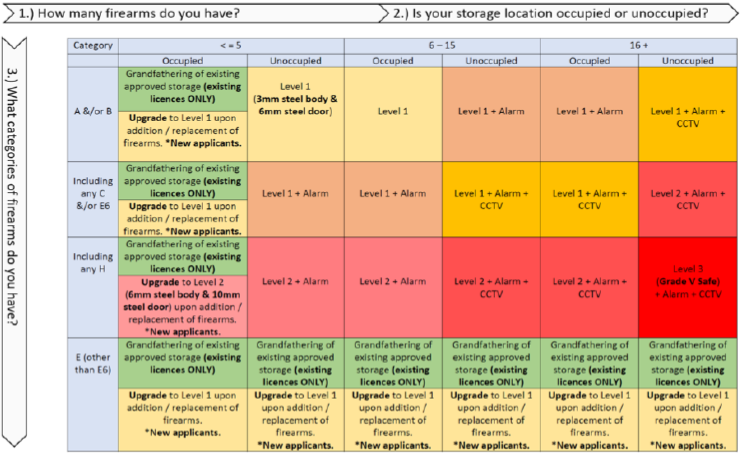
Storage Level Specifications
Level 1
▪ 3mm steel cabinet – 6mm steel door; or
▪ Grade V safe as determined by AS/NZS 3809:1998 Safes and Strongrooms, or
▪ Compliant secure room or strong room.
Level 2
▪ 6mm steel cabinet – 10mm steel door, or
▪ Grade V safe as determined by AS/NZS 3809:1998 Safes and Strongrooms, or
▪ Compliant secure room or strong room.
Level 3
▪ Grade V safe as determined by AS/NZS 3809:1998 Safes and Strongrooms, or
▪ Compliant secure room or strong room.
VIC
Detailed State Requirements: Click Here
Category A, B, C, D & H
From 30 August 2022, the following must be met to ensure compliance with the law:
- Firearms must be stored in a purpose-built steel storage receptacle
- The steel must be of a thickness of at least 1.6mm (which complies with Australian/New Zealand Standard 1594:2002).
- If the receptacle weighs less than 150 kilograms when it is empty, it must be bolted to the structure of the premises.
- The receptacle must be locked with a lock of sturdy construction when the firearm is stored in it.
NZ
Detailed Requirements: Click Here
- The lockable cabinet, container, or receptacle must be of ‘stout construction’.
- Steel Cabinets, Containers, or Receptacles For steel cabinets, Police recommends the following:
- A continuous resting/bracing plate inside the doorframe to prevent the flexing of the walls and the door from being pushed in.
- Steel cabinets, containers and receptacles should have walls and a door of at least 3mm thick steel. If the cabinet, container or receptacle is constructed of steel less than 3mm, bracing must be added to provide equivalent strength. The bracing should be to such a level to stop the door or the safe from twisting.
- A door may have an internal bracing frame of angle steel to prevent flexing or bending when closed. Alternatively, the door edge may be continuously folded in such a way as to prevent flexing or bending when closed.
- The cabinet should be fixed to the building on two surfaces with at least 6mm fasteners and fastened to a rigid surface or support such as concrete, brick or through plaster board to a stud or dwang. Fasteners of 6mm x 75mm long will ensure at least 50mm of thread is engaged in the rigid support. Use heavy gauge ‘coach’ screws anchored by at least 50mm and a large washer placed under each coach screw head into the framing. If secured into concrete, use similar gauge chemical or expanding bolts. Floor fixing to a wooden floor to be completely through the floor. The bolts should have a stout backing plate or sufficiently large washers to prevent them from being pulled through the floor.
- The door should have internal or protected hinges that are sturdily constructed of at least 3mm mild steel.
- Locks and hinges should be located to prevent the door from being opened or bent using direct force or levers. If the risk can be minimised through other mechanical means then it will be considered by the Police employee.
-
Cabinet seams must be welded or folded to prevent
the cabinet being accessed using direct force or levers.
JOIN TEAM SPIKA AND GET UPDATES FOR THE BEST HUNTING GEAR AND NEW RELEASES. SIGN UP
